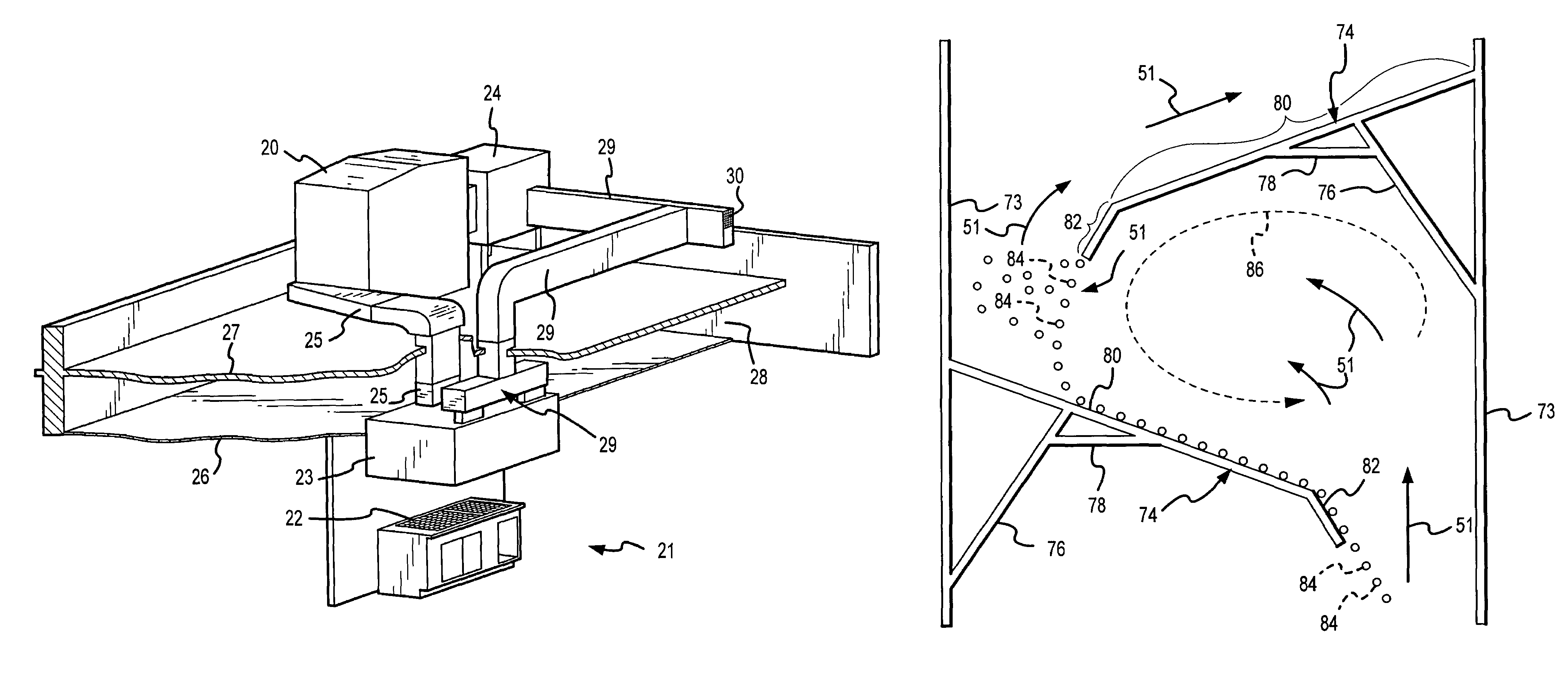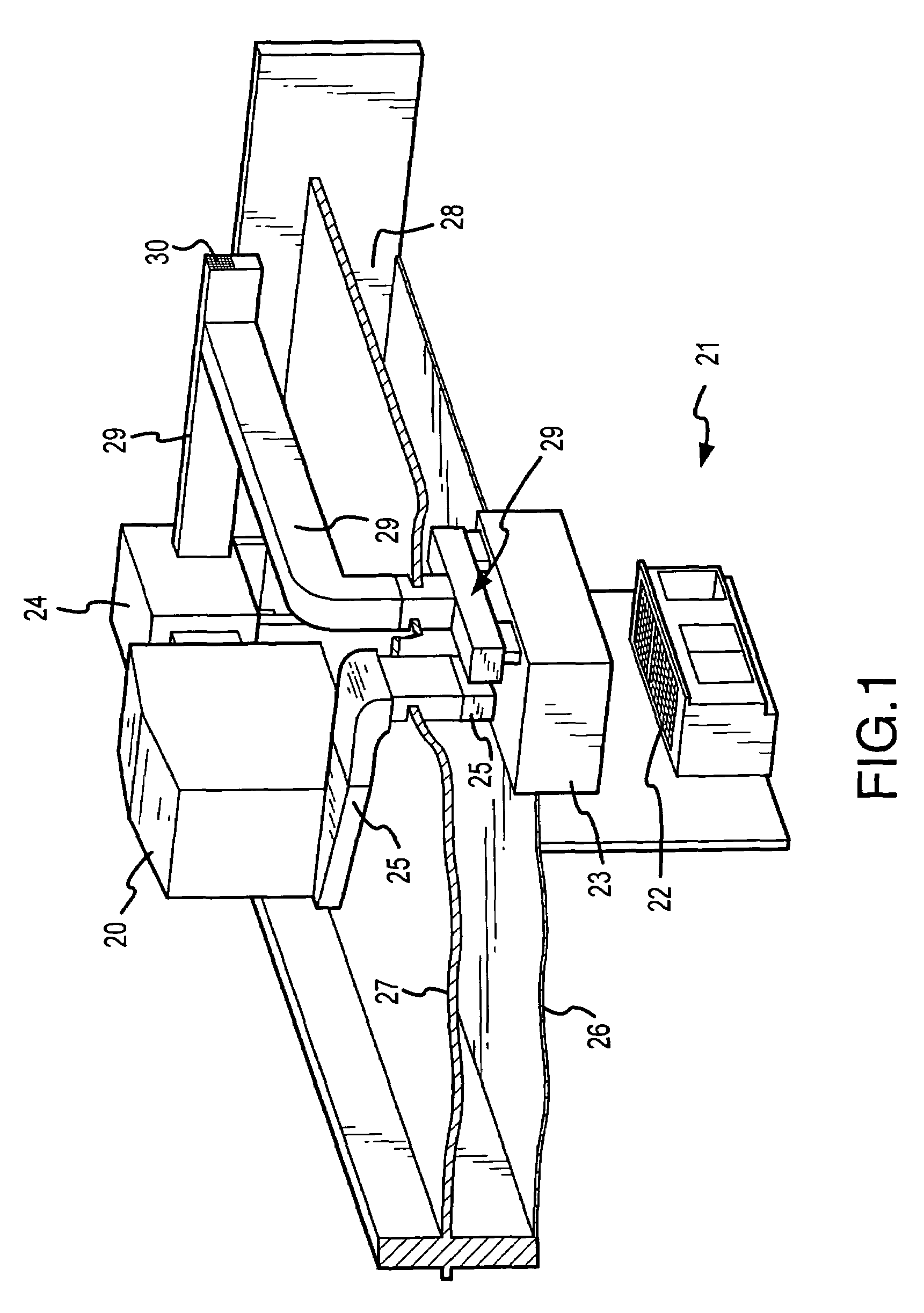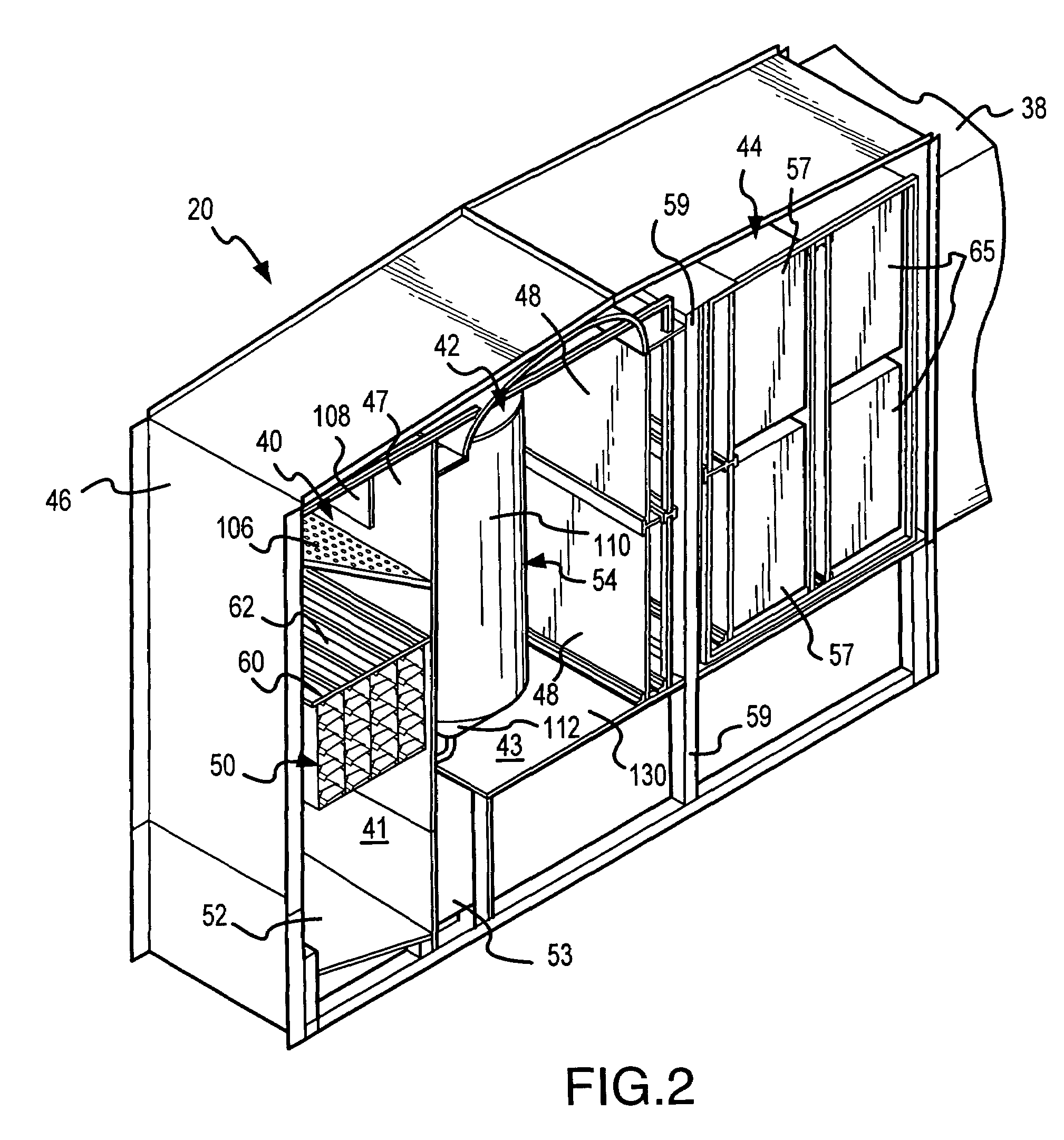Apparatus and method for cleaning, neutralizing and recirculating exhaust air in a confined environment
a technology of confined environment and apparatus, which is applied in the direction of machines/engines, chemical/physical processes, domestic heating, etc., can solve the problems of carbon monoxide, toxic and lethal in concentrated doses, and the amount of air consumed from within the confined environment to exhaust contaminants, so as to reduce the capacity of heating, cooling and air conditioning equipment, and improve the cability
- Summary
- Abstract
- Description
- Claims
- Application Information
AI Technical Summary
Benefits of technology
Problems solved by technology
Method used
Image
Examples
Embodiment Construction
[0028]A cleaner 20 embodying part of the present invention is shown in FIG. 1. The cleaner 20 is shown in a typical or exemplary use in a restaurant cooking-exhaust cleaning and recirculating application. However, the use of the invention is not limited to food preparation establishments, but may be used in any confined environment in which a variety of different types of contaminants are created and from which those contaminants must be exhausted in a flow of air. Examples of other business and industrial establishments where the present invention is particularly useful are automobile repair shops, clothes dry cleaning operations, waste and water treatment plants. The contaminants may be any airborne particulate matter of solid or liquid substances or may be molecules of hazardous gaseous substances. For example, in the restaurant cooking-exhaust cleaning application, the contaminants may include grease and fat particles, smoke, volatile organic compounds, carbon monoxide and / or ot...
PUM
| Property | Measurement | Unit |
|---|---|---|
| angle | aaaaa | aaaaa |
| angle | aaaaa | aaaaa |
| thick | aaaaa | aaaaa |
Abstract
Description
Claims
Application Information
 Login to View More
Login to View More - R&D
- Intellectual Property
- Life Sciences
- Materials
- Tech Scout
- Unparalleled Data Quality
- Higher Quality Content
- 60% Fewer Hallucinations
Browse by: Latest US Patents, China's latest patents, Technical Efficacy Thesaurus, Application Domain, Technology Topic, Popular Technical Reports.
© 2025 PatSnap. All rights reserved.Legal|Privacy policy|Modern Slavery Act Transparency Statement|Sitemap|About US| Contact US: help@patsnap.com



